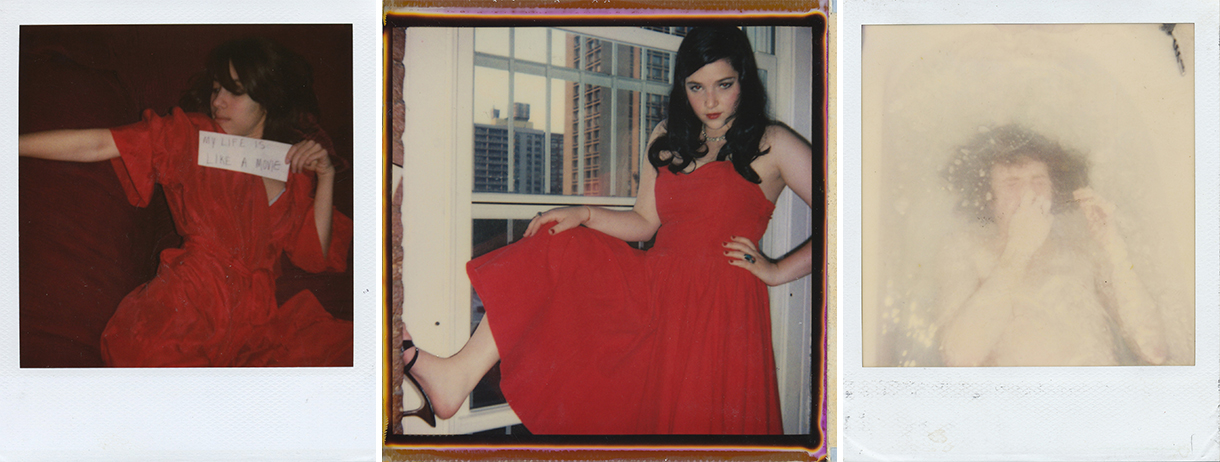by Taylor Dafoe

Emma Bee Bernstein, “Untitled,” (Unique Color Polaroids), 2003-2007, 4″ x 3 1/2″ each.
There is a tragic element, as despite all the attempts at engendering an image that matches a mental picture, the woman underneath the clothes and behind the skin remains a mystery to us and to herself. The perfect projection of the internal imagined self, if it exists, only does so for the duration of the photographic performance.
—Emma Bee Bernstein
Emma Bee Bernstein was constantly in search of the “internal imagined self,” as a young woman, as an artist, as a person. She never found it. But for any photographer, even though the mental image is not and cannot be manifested from the mind, it becomes real insofar as it becomes product, a tangible thing.
Bernstein’s untitled works featured in the show were arranged into three rows and two columns of 70 Polaroid pictures, hung in the gallery adjacent to her mother, Susan Bee’s, colorful paintings. Taken during her undergraduate years and the few thereafter, the photos are faded and yellowed, tonally and physically. Instant film was a medium suited for Bernstein’s photographic impulses: at once fresh and nostalgic, the product of a moment that occurred minutes before it came into being, but reminiscent of an older time. They’re all portraits, all feature somebody in some capacity—modeling, in tableau, aware that the picture is being taken; or not—candid, blurry, sleeping. All her subjects are young, leaving their teens or entering their twenties. College students and newly minted adults. Kids. Just kids, listless, irreverent. Posing, playing, slacking off, and goofing around. Their makeup is imperfect, yet bright: proudly indifferent. Their hair is long and uncombed. They’re wearing weird costumes or old cocktail dresses or nothing at all. Garish nightgowns and hats with feathers. A SPAM t-shirt. Thrift store treasures, the trappings of times long-since past, if they existed at all. They’re dangling long cigarettes from their fingers, wearing fake pearls. “My life is like a movie,” reads a handwritten sign held by a girl. She is wearing a scarlet red peignoir, ruffled like rose petals, baggy with the weight of years.

Emma Bee Bernstein, “Untitled,” (Unique Color Polaroids), 2003-2007, 4″ x 3 1/2″ each.
The girls are made up like this, all rhinestoned and rouged like forgotten film stars from the silent era. Their bodies are imperfect because all bodies are imperfect. And they are learning this: learning not to be comfortable with their bodies, but to be comfortable with the idea that no one is really comfortable with their bodies. Learning ultimately what we all learn eventually, that there is no such thing as a proper projection of the “internal imagined self.” That the internal imagined self is a moving target, one never really hit. Her photos capture this moment. They are not morose, but elegiac. Not a celebration of new-found freedom and imminent adulthood, but a lamentation for everything the future could have been, back in the past, and was not and is not and probably will never be. Not for Emma herself, at least. In 2008, at the age of 23, Emma Bee Bernstein committed suicide, the same year Polaroid stopped producing instant film.